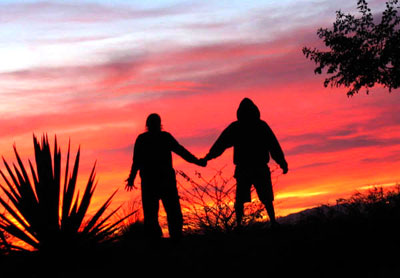All Nonfiction
- Bullying
- Books
- Academic
- Author Interviews
- Celebrity interviews
- College Articles
- College Essays
- Educator of the Year
- Heroes
- Interviews
- Memoir
- Personal Experience
- Sports
- Travel & Culture
All Opinions
- Bullying
- Current Events / Politics
- Discrimination
- Drugs / Alcohol / Smoking
- Entertainment / Celebrities
- Environment
- Love / Relationships
- Movies / Music / TV
- Pop Culture / Trends
- School / College
- Social Issues / Civics
- Spirituality / Religion
- Sports / Hobbies
All Hot Topics
- Bullying
- Community Service
- Environment
- Health
- Letters to the Editor
- Pride & Prejudice
- What Matters
- Back
Summer Guide
- Program Links
- Program Reviews
- Back
College Guide
- College Links
- College Reviews
- College Essays
- College Articles
- Back
The Surprising Lives of Native American Youth while inside Reservations
American Indian adolescent suicide rates extremely profound
Many children living in Native American reservations throughout the country face crippling statistics and the reality that their chances to become a successful adult are increasingly small. A majority of these children grow up in harmful environments while only a minimal distance away, children the same age outside of reservations are developing in much better circumstances. Pathologies of reservation life include the following - unemployment, poverty, sexual assault, domestic violence, alcoholism and drug addiction. Reservation life for young individuals nearly guarantees a much more grim future than the chance of a child living outside of a reservation. In fact, a Native American minor taking their life is more than three times the national average. Theresa M. Pouley, chief judge of the Tulalip Tribal Court in Washington state as well as member of the Indian Law and Order Commission, says “The circumstances are absolutely dire for Indian children”. She explains, “One quarter of Indian Children live in poverty, versus 13 percent in the United States. They graduate at a rate 17 percent lower than the national average. They have two times the rate of abuse and neglect. They’re twice as likely as any other race to die before the age of 24.”
Reservation life and poverty
Why are the lives of children inhabiting reservations so much more threatened than the lives of children living outside of reservations? The answer is, most violence associated with reservation life is rooted to poverty. According to nrcprograms.org, a website dedicated to educating individuals about Native American poverty and reservation life, “It is not uncommon for 3 or more generations to live in a two-bedroom home with inadequate plumbing, kitchen facilities, cooling, and heating.” It is further explained that, “While most Americans take running water, telephones, and electricity for granted, many reservation families live without these amenities.” Unemployment is a determining source for many of the issues inside reservations, including minimal housing fundamentals. “The scarcity of jobs and lack of economic opportunity mean that...four to eight out of ten adults on reservations are unemployed.”
What can high school students do to help?
Another question raised is, why isn’t the average high school student aware of these problems that are astonishingly occurring so close to home? More than half a million Native Americans inhabit the country, 22% of which live in the 566 tribes scattered across America. Yet many are unaware of the problems that Indian families face on a daily basis. American high schools across the nation, highly unaware of poverty inside reservations, should be encouraged to educate themselves about reservation life and the different ways they can take action to help Native Americans break free from the unpromising statistics domineering them. This could bring life to new fundraisers similar to the ones raising money for school supplies and other basic necessities like appliances (heaters...), clothing, and food for other causes. Simple, local fundraisers like this, introduced into various high schools across the country, can make a big difference in the lives of thousands. Organizations like Native American Aid (NAA) and National Indian Education Association (NIEA) offer other ways for students to touch the lives of Native American families annually with generous donations.
Conclusion
High school students have a surprisingly significant amount of power. With determination, generosity, and participation, we can start feeding mouths, ending youth suicide, and giving better living conditions to many deserving individuals. No more will there be stories of children taking their lives because “mental-health treatment wasn’t available on [their] reservation.” Byron Dorgan, a former senator from North Dakota, once explained in an article about Indian youth committing suicide, that “The children bear the brunt of the misery,”. He continues with, “But there is no sense of urgency by our country to do anything about it.” It is time to acknowledge the opportunities we have to stop this problem in America. A problem which many don’t know about. The only way to achieve success is to take action, and students, in doing so, can dramatically change our country for the better. Perhaps if we simply looked around, we could have provided aid and ended this appalling issue a long time ago.
Works Cited:
Horwitz, Sari. "The Hard Lives - and High Suicide Rate - of Native American Children on Reservations." The Was`hington Post 9 Mar. 2014: n. pag. Print.
"NAA Home - Native American Aid." NAA Home - Native American Aid. N.p., n.d. Web. 09 Jan. 2015.
"American Indians Today." American Indians Today. N.p., n.d. Web. 09 Jan. 2015.
"Statistics on Native Students." National Indian Education Association. N.p., n.d. Web.

Similar Articles
JOIN THE DISCUSSION
This article has 0 comments.
